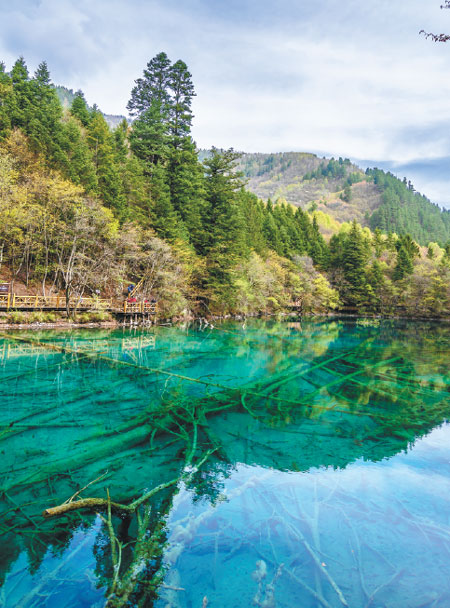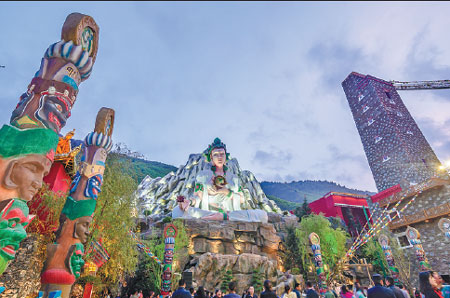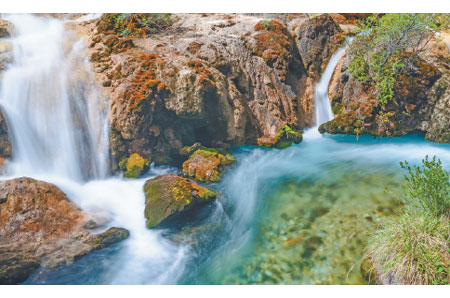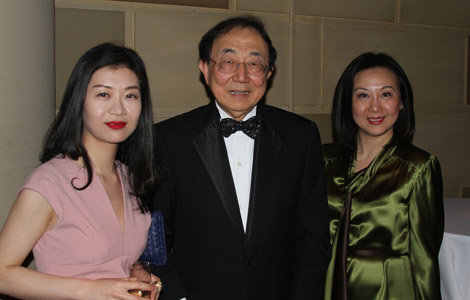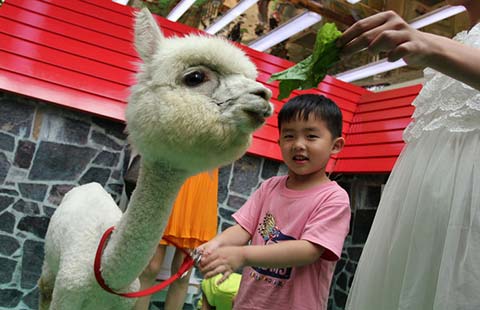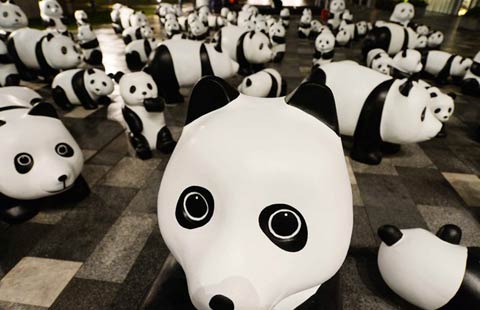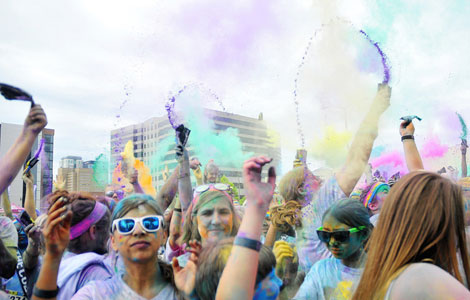Jewels of nature
Updated: 2014-06-06 06:59
By Deng Zhangyu (China Daily)
|
||||||||
Shimmering blue lakes, forests rich with new spring growth and lingering snow on the surrounding mountains make a walk through Jiuzhaigou Valley a fairy-tale experience, Deng Zhangyu discovers.
Before I arrive in the Jiuzhaigou Valley, I've heard that even a top artist cannot capture the colors of this heaven-like place in paint. When I see the clear turquoise lakes with my own eyes, I'm overwhelmed by the breathtaking colors - a work of art never touched by a painter's brush.
Getting out of the Jiuzhai Huanglong Airport, where the elevation is 3,348 meters, I am confronted by heavy snow when I am still in my T-shirt in early May. I quickly slip into my down jacket and jump into a waiting car.
The two-hour drive down the hillside to my hotel near Jiuzhaigou is made more thrilling every five minutes by a sharp turn. Although my nerves are on the edge from the swerving and the high attitude, I am entranced by mountains coated in snow in the far distance.
As we descend, the snow gives away to rain. The time I arrive at my hotel, 10-minutes' drive from the Jiuzhaigou Valley, the sun comes out and the temperature is once again like a spring day. As the sun sets against a blue sky just washed clean by rain, I realize that within two hours, I've experienced two seasons and three kinds of weather. It's an unexpected welcome gift.
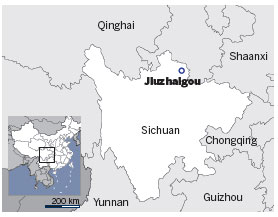
My exploration of the fairy-tale world starts early next morning, when the sky has just taken on an orange hue. I head out early to get ahead of the flow of tourists into the valley.
Jiuzhaigou Valley takes its name from nine Tibetan villages inhabiting the Y-shaped area. Green, blue and yellow lakes dot its length. In the local language, lakes are called haizi, and the waters change color with the seasons as the dense forests around them don their spring-to-autumn tints.
I feel the magic when I encounter a narrow lake thick with reeds that flicker with the soft wind. The jade-colored lake splits into three parts as it winds among the spiky gray plants. Due to the high altitude of about 2,140 meters, the reeds here are not tall. Sometimes birds nesting in the reeds fly up to the sky, breaking the quietness.
As I walk on, lakes of different shapes and colors come one after another. The blue Double Dragon Lake has its two gray strings of barrier rocks under the lake. The Tiger Lake is colored in animal-like stripes when surrounding trees reflect on the water. The emerald-green Rhinoceros Lake is 2 kilometers long.
It's all like watching a beauty pageant, and I indulge in the visual feast.
Arriving at the place where the Rize and Zechawa valleys meet from the two branches of the Y area, I hear rushing waters. It is the Nuorilang waterfall, the widest in China, about 270 meters across with drops equal to the height of a seven-story building. The huge voice of the waterfall echoes in the valley. I'm lucky enough to see a rainbow here.
Further on, the Mirror Lake is renowned for its quietness, reflecting the surrounding trees clearly in perfect stillness. The Panda Lake takes the colors of white and black from the stones underneath.
Then comes the most wonderful Five Flower Lake, with colors ranging from peacock blue and green to light yellow. It glitters under the afternoon sunshine.
All day, no matter where I go, I can always see the white peak of mountains covered by snow. When I get up to 4,000 meters, where magnificent Long Lake stretches out against the white snow, it is breathtaking in every sense, and the beauty before me makes my heart race.
The biggest dark blue lake in Jiuzhaigou flows to the end of the snowy mountain far away, framed in tree-clad mountains. In this visual collision of winter and spring, the blue, white and green combine to make everything seem unreal, dreamlike.
The moment feels like it can last forever, but the setting sun is taking the day's warmth with it. It's time to leave.
Back at my hotel, I'm attracted by a Tibetan-themed park nearby. Inside the Jiuzhai Songcheng Park stands a colossal Tibetan prayer wheel, two Tibetan-style watchtowers and a goddess of snow mountains.
The legend goes that the goddesses became lakes and Tibetan men became villages after their love angered the divine.
The watchtower offers a grand view of the mountains and the valley's dense forests.
Surprisingly, the park has a theater staging a 3-D reality show of stories about Tibetan and Qiang people who've inhabited the area for years. It costs me 260 yuan ($42, including the ticket for Jiuzhaigou Valley) to experience a spiritual trip close to the local people's life. The dreamy lakes are relived on a 3-D projection screen, with those hues of blue, green and yellow that will stay in my mind forever.
Contact the writer at dengzhangyu@chinadaily.com.cn
IF YOU GO
Autumn is the best time to visit the Jiuzhaigou Valley, when all the trees turn red and yellow. You can fly to Chengdu first and then fly for another hour to the Jiuzhai Huanglong Airport.
The scenic spot is about 88 kilometers away. Rent a car and book your hotel in advance, as the transportation and hotel rooms are limited.
The closest hotel to Jiuzhaigou Valley is the Tianyuan Hao - sheng Hotel (400-8888-518).
The ticket to explore the valley costs 220 yuan ($35) per person. There are shuttle buses in the valley, which make it very convenient for you to go from one lake to another.
Bring a light down jacket as the temperature varies dramatically between day and night.
|
One of the 118 lakes in the Jiuzhaigou Valley glitters in the sun. Photos by Zhu Guitian / For China Daily |
|
The goddess of snow mountains stands in the Jiuzhai Songcheng Park. |
|
Rapids and waterfalls add to the countless lakes allure. |
|
The 3-D reality show inside the Jiuzhai Songcheng Park offers glimpses into the lives of the area's Tibetan and Qiang people. |
(China Daily 06/06/2014 page18)

 Council of Fashion Designers of America Awards
Council of Fashion Designers of America Awards
 Fan Bingbing, first Chinese actress in Barbie Hall of Fame
Fan Bingbing, first Chinese actress in Barbie Hall of Fame
 Awarding ceremony of 2014 hito Pop Music held in Taipei
Awarding ceremony of 2014 hito Pop Music held in Taipei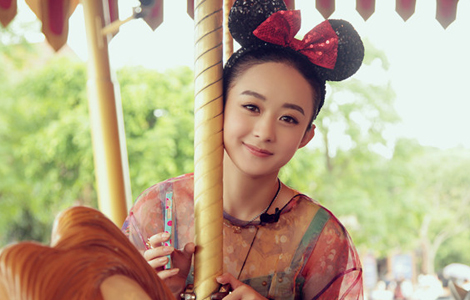
 Zhao Liying's photo shoot for Children's Day
Zhao Liying's photo shoot for Children's Day
 'Taken 2' grabs movie box office crown
'Taken 2' grabs movie box office crown
 Rihanna's 'Diamonds' tops UK pop chart
Rihanna's 'Diamonds' tops UK pop chart
 Fans get look at vintage Rolling Stones
Fans get look at vintage Rolling Stones
 Celebrities attend Power of Women event
Celebrities attend Power of Women event
Most Viewed
Editor's Picks

|

|
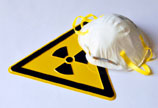
|

|
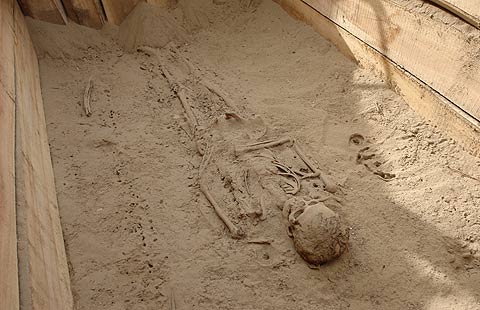
|
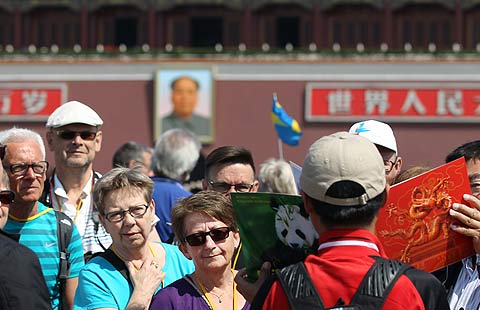
|
Today's Top News
Silk Road offers Sino-Arabian blueprint
US issues biased report on China's defense spending
Death penalties in Xinjiang reflect crackdown on terror
More Sino-US space co-op expected
NBA launches outreach in China
Clinton 'love to see' female leader
Naval drill may calm choppy ties with the US
US needs to reexamine NASA's China exclusion policy
US Weekly

|

|
